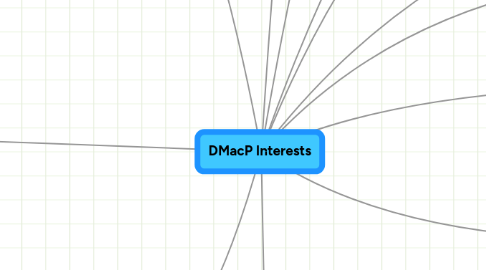
1. Layers of the Internet
1.1. Application
1.1.1. Building Information Modeling (BIM)
1.1.1.1. Concept
1.1.1.1.1. Sketchup
1.1.1.2. Project Management
1.1.1.2.1. Deltek
1.1.1.3. Modeling
1.1.1.3.1. Revit
1.1.1.3.2. Grasshopper
1.1.1.3.3. Rhino
1.1.1.3.4. Energy
1.1.1.4. Clash Detection
1.1.1.4.1. Navisworks
1.1.1.5. Building Codes
1.1.1.5.1. Online Subscriptions
1.1.1.5.2. Knowledge Network
1.1.1.5.3. Limit Search by Geographic Area
1.1.1.6. Cost Estimating
1.1.1.6.1. Timberline
1.1.1.7. Text Documents, Spreadsheets
1.1.1.7.1. Microsoft Products
1.1.1.8. Specifications
1.1.1.8.1. eSPECS
1.1.1.9. Submittals
1.1.1.9.1. Expedition
1.1.1.10. Signage and Graphics
1.1.1.10.1. Photoshop
1.1.2. Geographic Information Systems (GIS)
1.1.2.1. ESRI ArcInfo
1.1.3. Computerized Maintenance Management Systems (CMMS)
1.1.3.1. Service Contracts
1.1.4. Enterprise Asset Management (EAM)
1.1.5. Crisis Management Software (CIMS)
1.1.6. Computer Aided Dispatch (CAD)
1.2. Presentation
1.2.1. Open Floor Plan Display
1.3. Session
1.3.1. Public Service Answering Point (PSAP)
1.4. Transport
1.4.1. Next Generation 9-1-1 (NG911)
1.5. Network
1.5.1. Scalability
1.6. Data Link
1.7. Physical
1.7.1. Sensor Web Enablement (SWE)
2. Knowledge Network
2.1. Lessons Learned
2.2. Reminders about Information that should be included
2.3. Overviews
2.4. Relationship Structures
2.5. Necessary Attributes
2.6. Ensure Consistency
2.7. Master and Reference Data
2.8. Metadata
2.9. Content
2.10. Design Methods
2.11. Understand Owner Requirements
2.12. Online Resources
2.12.1. Manufacturer's Product Data
2.12.2. Limit search by properties
2.13. Continuous Cycles of Activity
2.14. Known Answers to Repeated Questions
2.15. Company Policies
2.16. Formulaic Buildings
2.16.1. Dorms
2.17. Room Data Sheets
2.17.1. Equipment
2.18. Naming Conventions
3. Lifecycle
3.1. Public Safety
3.1.1. Meet Receiver Requirements
3.1.2. Area of Service
3.1.3. Preplanning
3.2. Energy Efficiency
3.2.1. Sustainability
3.3. Shared Data Architecture
3.4. Reaching General Public
3.4.1. Accuracy&Aesthetics
3.5. Dynamic, Cyclical Development
3.6. Community Based Organizations
3.7. Placemaking
3.8. Non-Government Organizations
3.9. Finance
3.10. Law
3.11. Land Records
3.12. Public Buildings
3.12.1. K-12
3.12.2. Universities
3.12.3. Libraries
3.12.4. Museums
3.12.5. Airports
3.12.6. Courthouses
3.12.7. Hospitals
3.12.8. Sports
3.12.9. Shopping Malls
4. Data Structures
4.1. Linked Open Data
4.2. Reuse of Common Elements
4.2.1. BIM > FM > EM > Manufacturing
4.3. Ontologies
4.3.1. Ontolog Forum
4.3.1.1. NIST Summit
4.4. Organizational Structures
4.4.1. Upper Mapping and Binding Exchange Layer (UMBEL)
4.5. Reasoning
4.6. Periodic Table of BIM Elements
4.7. Messaging Structure
5. Construction Specification Institute (CSI)
5.1. Construction Dictionary for North America
5.1.1. Wiki for a contest between Chapters and Regions to populate dictionary
5.2. CSI Northern Virginia Incoming President
5.3. Formats
5.3.1. MasterFormat
5.3.2. UniFormat
5.3.3. OmniClass
5.3.3.1. OmniClass Support and Technology Sponsor Group
5.3.3.2. Properties
5.3.3.3. Space Types
5.3.3.4. Facility Types
5.3.3.5. Materials
6. Machine Languages
6.1. Universal Modeling Language (UML)
6.2. Geographic Markup Language (GML)
6.3. Exensible Markup Language (XML)
6.4. JavaScript
6.5. AJAX
7. Symbols
7.1. National CAD Standard
7.2. NFPA Safety Symbols
7.3. AIGA Symbol Signs
8. Parameters
8.1. BIM Library
8.2. Common Reference System
8.3. Geometry
8.4. Fundamental Characteristics
8.5. Widely used information
9. Data Integration
9.1. National Information Exchange Model (NIEM) - Business Architecture Committee (NBAC)
9.2. Fit for Purpose
9.3. Multi-Discipline
9.4. Modularity
9.5. Context, Interrelationships with other data
9.6. Mutually supportive artifacts
9.6.1. XML Schemas
9.6.2. RDF Triples
9.6.2.1. Assertion Chains
10. Data Mapping
10.1. Places & Spaces Mapping Science
10.2. Layout Algorithms
10.3. Aligning to Missions
10.4. Constraints
10.5. From Common Framework to Particular Buildings
11. Standards
11.1. National BIM Standard
11.1.1. Technical Subcommittee
11.1.2. International Foundation Classes (IFC)
11.1.2.1. Geometry
11.1.3. International Framework for Dictionaries (IFD)
11.1.3.1. Translation
11.2. Open Geospatial Consortium (OGC)
11.2.1. CityGML
11.2.2. Indoor Navigation
11.2.3. Global Positioning Systems (GPS)
11.2.4. Separation of Concerns
11.3. Organization for the Advancement of Structured Information Standards (OASIS)
11.3.1. Emergency Data Exchange Language (EDXL)
11.3.1.1. EDXL-DE Distribution Element
11.3.1.2. EDXL-HAVE Hospital Availability
11.3.1.3. EDXL-RM Resource Messaging
11.3.2. Common Alerting Protocol
11.4. Organization Standards Consortium for Real Estate (OSCRE)
11.4.1. Real Property Unique ID (RPUID)
11.5. FCC
11.5.1. Like interstate highways, stop here, this fulfills America's needs
11.5.2. What will be adopted CAP? SMS? Images?
12. Taxonomy
12.1. Metadata Architectural Contents of Europe (MACE)
12.1.1. Classification Browser
